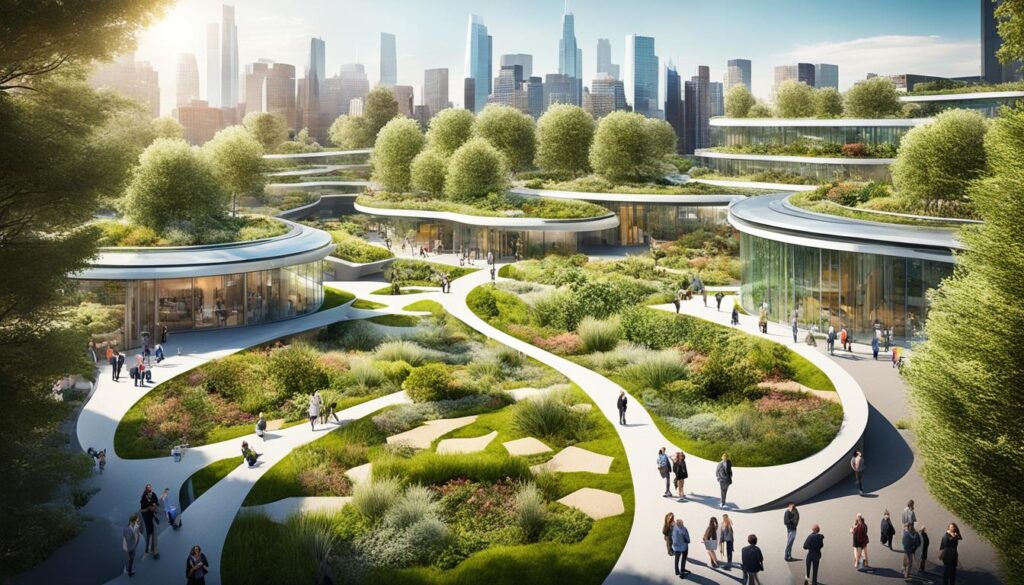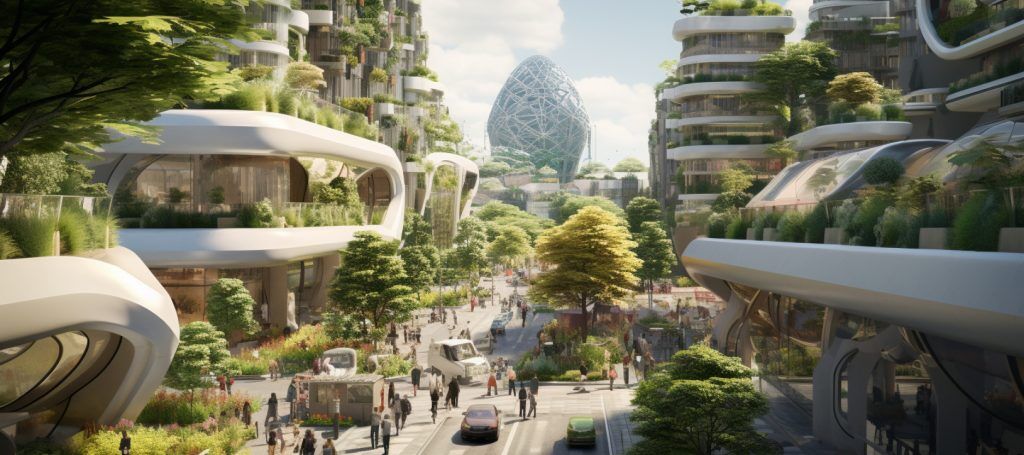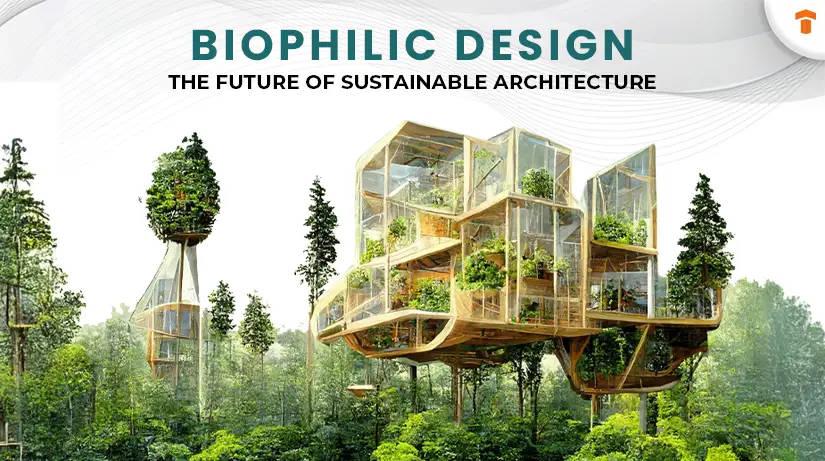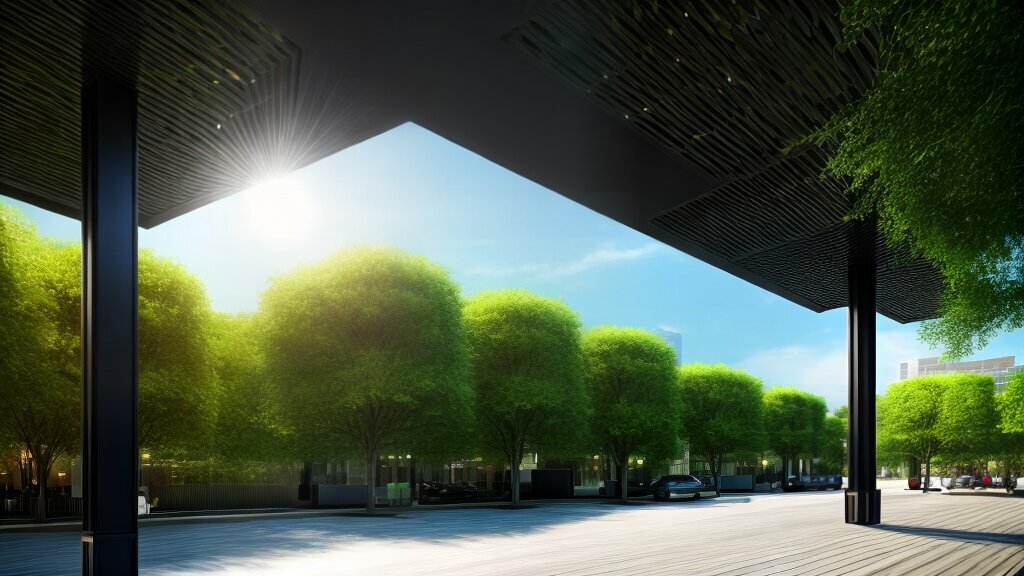Water Recycling in Biophilic Urban Designs.
Water recycling is increasingly recognized as a vital component of sustainable urban development, especially within the framework of biophilic designs that integrate nature with contemporary living.
This article examines the various types of water recycling, emphasizing its critical importance in the creation of resilient urban environments and the numerous benefits it provides.
Additionally, it addresses the challenges associated with implementation, including technological requirements and potential health risks, while showcasing successful case studies and prospective innovations.
The discussion underscores how cities can flourish by incorporating water recycling into their biophilic frameworks.
What Is Water Recycling?
.jpg_00.jpeg)
Water recycling, commonly referred to as water reuse, is the process of treating wastewater for repurposing in various applications, thereby playing a vital role in water conservation, urban water systems, and sustainable urban planning.
This practice encompasses the collection and treatment of greywater as well as rainwater harvesting to enhance resource efficiency, reduce the water footprint, and mitigate the pressure on local water supplies within urban ecosystems.
By implementing effective water recycling systems, municipalities can substantially decrease the demand for freshwater, foster innovative water management strategies, and contribute to the overall sustainability of urban environments through sustainable landscaping and water-efficient systems.
What Are the Different Types of Water Recycling?
There are various water recycling techniques, including greywater reuse and rainwater harvesting, each serving distinct functions within sustainable practices and urban sustainability initiatives. These methods are designed to leverage different aspects of the water cycle, allowing communities to enhance their water management strategies and promote ecological restoration.
For example, greywater reuse entails the treatment of water from baths, sinks, and laundry for non-potable applications such as irrigation and toilet flushing, leading to a significant reduction in freshwater consumption. Conversely, rainwater harvesting involves the collection of precipitation from rooftops, which is then stored for direct use, thereby preventing stormwater runoff, promoting passive irrigation, and mitigating flooding.
Both techniques substantially decrease the ecological footprint of urban areas by reducing reliance on traditional freshwater sources. As urban ecology flourishes through these initiatives, the overall health of local ecosystems is improved, fostering biodiversity, enhancing resilience to climate change, and supporting sustainable urbanism.
Why Is Water Recycling Important in Biophilic Urban Designs?
Water recycling is essential in biophilic urban designs, as it plays a critical role in ecological restoration and the enhancement of urban sustainability through the integration of natural systems into city planning and sustainable architecture.
This strategy facilitates the efficient utilization of water resources while promoting urban biodiversity, improving public spaces, and enhancing the overall quality of life for residents through community engagement and ecological design principles.
By incorporating green infrastructure, such as permeable surfaces, living roofs, and rooftop gardens, cities can effectively mitigate the urban heat island effect, reduce carbon footprints, and promote climate resilience.
What Are the Benefits of Water Recycling in Biophilic Urban Designs?
The advantages of water recycling within biophilic urban designs extend beyond the fundamental goal of water conservation; they include significant improvements in urban biodiversity, social well-being, environmental health, and overall environmental quality.
By effectively implementing water recycling systems, communities can foster healthier ecosystems, enhance air quality, provide recreational areas for public use, and integrate nature-based solutions into urban landscapes.
This strategic approach not only enhances water quality by minimizing pollutants and runoff, but also plays a crucial role in mitigating flooding and stormwater runoff, which can inflict considerable damage on urban infrastructure.
Engaging residents in these initiatives promotes a sense of community ownership and stewardship, thereby fostering deeper connections to local natural resources and enhancing public awareness of environmental benefits.
As neighborhoods adopt these sustainable practices, they become increasingly resilient to climate-related stressors, ultimately resulting in vibrant urban landscapes that support both human well-being and ecological health, while promoting urban resilience.
Through these synergies, communities can develop urban areas that thrive in both environmental and social dimensions, embodying the principles of integrated water management and sustainable communities.
How Does Water Recycling Contribute to Sustainable Cities?
Water recycling plays a crucial role in the advancement of sustainable cities by fostering practices that enhance urban sustainability, climate adaptation, and resource efficiency, thereby supporting ecosystem services and urban resilience.
By adopting innovative green technologies and infrastructure, cities are better positioned to manage water resources responsibly, thereby ensuring a reliable supply for future generations and enhancing the hydrological cycle.
This strategy not only mitigates the risks associated with flooding by effectively absorbing excess rainwater, but it also enhances drought resilience by providing an alternative water source during periods of dryness, while supporting sustainable drainage systems.
Through the implementation of water recycling systems, urban planners can diversify water supplies, thereby reducing dependency on traditional sources and promoting circular economy principles.
These systems are essential for integrating urban landscapes with natural hydrological processes, thereby promoting greater ecological health, urban runoff management, and improving community aesthetics.
As urban areas continue to grow, the necessity for implementing such sustainable practices becomes increasingly clear, paving the way for more resilient communities capable of adapting to changing climate conditions, supported by integrated urban planning and design.
What Are the Challenges of Implementing Water Recycling in Biophilic Urban Designs?
.jpg_01.jpeg)
Implementing water recycling within biophilic urban designs presents a variety of challenges, including technological requirements, policy frameworks, urban policy, and the necessity for environmental stewardship.
These obstacles may impede the adoption of effective water recycling systems. Therefore, it is crucial for stakeholders to collaboratively address these issues in order to promote sustainable practices in urban environments and foster community resilience.
What Are the Technological and Infrastructural Requirements for Water Recycling in Biophilic Urban Designs?
The technological and infrastructural requirements for water recycling within biophilic urban designs encompass advanced water recycling systems, green technologies, and innovative infrastructure solutions that support sustainable drainage systems and enhance ecosystem services. These components are essential for ensuring the effectiveness and efficiency of water recycling initiatives in urban settings.
To achieve these objectives, urban planners and engineers must incorporate real-time monitoring systems that utilize Internet of Things (IoT) sensors to track water quality and demand. The implementation of greywater reuse systems and rainwater harvesting technologies is vital in enhancing the overall water management strategy and promoting water-sensitive urban design.
Moreover, the use of permeable materials for surfaces can facilitate natural filtration processes while preserving the aesthetic appeal characteristic of biophilic designs. By integrating these technologies within urban infrastructure, including bioretention systems, communities can optimize water conservation efforts and simultaneously enhance public health and environmental resilience.
What Are the Potential Health and Environmental Risks of Water Recycling?
While water recycling presents a multitude of benefits, it is essential to acknowledge the potential health and environmental risks associated with its implementation, particularly concerning water quality, resource recovery, and the ecological impact on local ecosystems. Addressing these risks is critical to ensure the safe adoption of water recycling practices.
The introduction of pathogens or harmful chemicals into the recycled water supply can pose significant threats to public health, potentially jeopardizing access to safe drinking water and sanitation. Additionally, improper management of recycled water may disrupt aquatic habitats, resulting in a loss of biodiversity that is vital for maintaining ecological balance and ecological networks.
It is imperative to establish systems for rigorous monitoring to detect any contaminants promptly and ensure that water recycling processes comply with stringent regulatory standards. Such measures not only protect the health of communities but also safeguard the environment, underscoring the necessity for a comprehensive approach to managing these valuable resources responsibly, in line with principles of environmental stewardship.
How Can Biophilic Urban Designs Incorporate Water Recycling?
Biophilic urban designs can effectively integrate water recycling by utilizing nature-based solutions, landscape architecture, and community gardens that emphasize sustainable water management practices, ecological connectivity, and habitat creation.
By aligning constructed environments with natural systems, cities can develop resilient ecosystems that provide benefits for both residents and wildlife, promoting ecological awareness and community resilience.
What Are Some Examples of Successful Water Recycling in Biophilic Urban Designs?
Successful instances of water recycling within biophilic urban designs can be observed across various urban environments, demonstrating the effective integration of green infrastructure, landscape connectivity, and sustainable resource management. These case studies underscore innovative strategies for water recycling that enhance urban sustainability and biodiversity.
For example, the High Line in New York City incorporates a rainwater harvesting system that collects and reuses stormwater, which not only irrigates the extensive plantings but also reduces runoff. Similarly, the Bosco Verticale in Milan utilizes an advanced water management system that addresses the building’s irrigation and cooling requirements, ultimately fostering a stronger connection between urban residents and nature through living architecture principles.
These projects exemplify how carefully considered biophilic design not only supports the health of urban ecosystems, enhancing urban biodiversity and ecological connectivity, but also promotes community engagement in environmental stewardship, resulting in enriched urban experiences that celebrate nature in everyday life.
What Are the Key Considerations for Implementing Water Recycling in Biophilic Urban Designs?
.jpg_10.jpeg)
In the implementation of water recycling within biophilic urban designs, several key considerations must be meticulously addressed, including community engagement, urban sustainability, and the establishment of effective policy frameworks that promote sustainable practices. These elements are critical for ensuring the successful adoption of water recycling initiatives in urban planning, supporting climate resilience and the local water cycle.
To cultivate a collaborative environment, the involvement of stakeholders is essential, as it allows for diverse perspectives to enrich the decision-making process. Public education is also of paramount importance in enhancing awareness and understanding of the benefits associated with water recycling, which can subsequently lead to increased community support and participation.
Furthermore, it is crucial that these initiatives adhere to regulatory compliance to guarantee that all activities align with environmental standards and guidelines, thereby supporting sustainable resource management and ecological design principles.
By establishing transparent platforms for feedback and involving the public in discussions, cities can effectively navigate the complexities of policy frameworks that support innovative approaches to water management.
What Is the Future of Water Recycling in Biophilic Urban Designs?
The future of water recycling within biophilic urban designs appears promising, bolstered by innovations and advancements that contribute to urban resilience, sustainable urbanism, and the sustainable management of water resources.
As urban areas increasingly confront the challenges posed by climate change, the integration of advanced water recycling technologies will be essential in promoting sustainable urban development.
What Are Some Innovations and Advancements in Water Recycling Technology?
Innovations and advancements in water recycling technology, including enhanced water filtration systems, natural filtration, and green technology solutions, are significantly transforming sustainable practices in urban environments. These developments improve the efficiency and effectiveness of water recycling initiatives, facilitating broader implementation within biophilic urban designs and supporting ecological innovation.
By integrating systems such as membrane bioreactors and advanced oxidation processes, municipalities can substantially reduce the strain on freshwater resources while ensuring that treated water meets the required quality standards for reuse. This transition addresses the increasing concerns surrounding water scarcity and promotes a healthier urban ecosystem.
Urban planners can utilize these technologies to create resilient infrastructures that support biodiversity, ecological restoration, and enhance the overall quality of life for residents. As cities progressively adopt smart water management practices, there is considerable potential for innovations in data monitoring systems that enable efficient resource management, further solidifying the role of water recycling in sustainable urban development and contributing to environmental health.
How Can Governments and City Planners Encourage and Support Water Recycling in Biophilic Urban Designs?
Governments and city planners play a vital role in promoting and supporting water recycling within biophilic urban designs by establishing supportive policy frameworks, urban policy, and employing participatory design approaches. Through fostering collaboration among stakeholders and prioritizing sustainable practices, they can significantly enhance the effectiveness of water recycling initiatives in urban environments, contributing to urban ecology and ecological networks.
To effectively promote water recycling, a comprehensive strategy is necessary, which includes adequate funding mechanisms to support innovative projects and technologies, such as permeable surfaces and water-efficient systems. Additionally, educational programs aimed at raising awareness about the benefits of water conservation and ecological awareness can enable residents to actively participate in recycling efforts.
Engaging the community through workshops and outreach initiatives fosters a sense of ownership and responsibility toward sustainable water management and resource recovery. By integrating these efforts with existing infrastructure and providing clear incentives for both businesses and households, planners can cultivate a culture of sustainability that not only addresses water scarcity challenges but also enhances the overall urban landscape through landscape integration and urban green spaces.
Frequently Asked Questions
What is water recycling in biophilic urban designs?
.jpg_11.jpeg)
Water recycling in biophilic urban designs refers to the process of collecting, treating, and reusing water within a city or urban environment in a sustainable and natural way. It involves incorporating elements of nature, such as plants and natural filtration systems, to purify and recycle water for various uses.
Why is water recycling important in biophilic urban designs?
Water recycling is important in biophilic urban designs as it helps to reduce the strain on freshwater resources and promotes a more sustainable and environmentally-friendly approach to managing water within a city. It also enhances the overall aesthetic and liveability of urban spaces by incorporating natural elements into the design.
What are some examples of water recycling in biophilic urban designs?
Examples of water recycling in biophilic urban designs include incorporating green roofs and walls, rain gardens, and constructed wetlands into building designs to capture and treat rainwater for reuse. Other examples include greywater systems, which recycle water from sinks, showers, and laundry for non-potable uses such as irrigation, passive irrigation, and stormwater management.
What are the benefits of water recycling in biophilic urban designs?
The benefits of water recycling in biophilic urban designs include reducing the demand for freshwater, minimizing stormwater runoff and pollution, creating more green spaces and improving air quality, and promoting a more sustainable and resilient urban environment.
Are there any challenges to implementing water recycling in biophilic urban designs?
Yes, there can be challenges to implementing water recycling in biophilic urban designs, such as the initial costs of installing and maintaining systems, limited space for incorporating green infrastructure and sustainable architecture, and potential conflicts with existing infrastructure and regulations. However, these challenges can be addressed through proper planning, ecological restoration, and collaboration between stakeholders.
How can individuals contribute to promoting water recycling in biophilic urban designs?
Individuals can contribute to promoting water recycling in biophilic urban designs by adopting water-saving practices in their daily lives, such as using low-flow fixtures and appliances, collecting rainwater for outdoor use, engaging in rainwater harvesting, and supporting local initiatives to incorporate green infrastructure and sustainable landscaping in their communities.

I’m Bruno, an architect with a deep passion for Biophilic Design in Urban Architecture. Throughout my career, I’ve focused on integrating natural elements into urban planning, and I created this site to share my insights and foster a deeper understanding of how biophilic principles can significantly enhance urban living. Dedicated to sustainable development, I continually explore innovative design solutions that promote both environmental and human well-being in city landscapes.














Publicar comentário